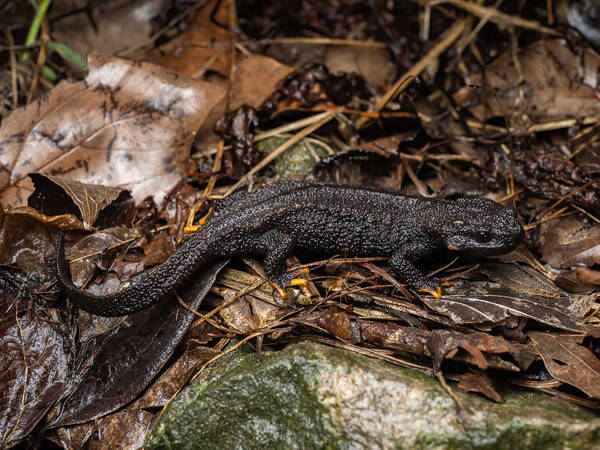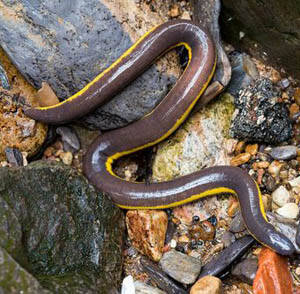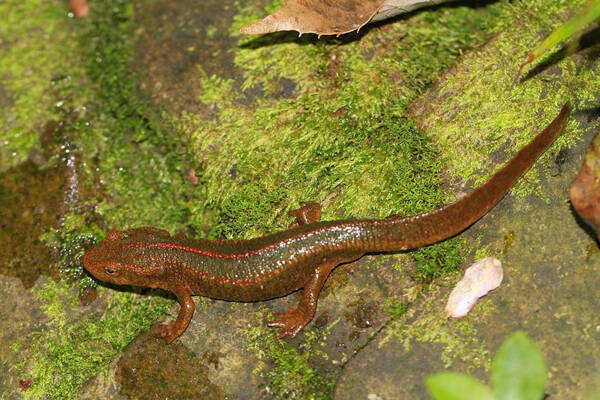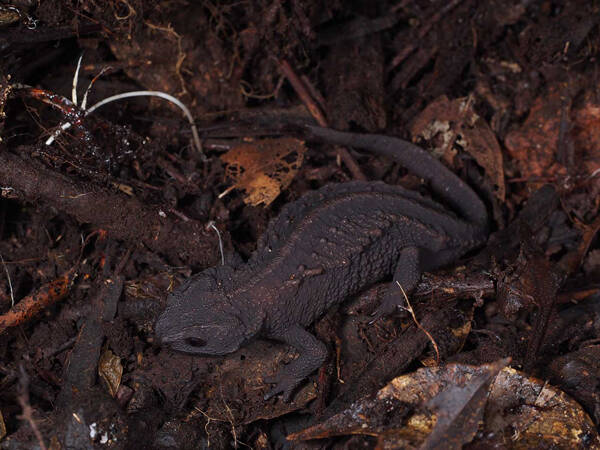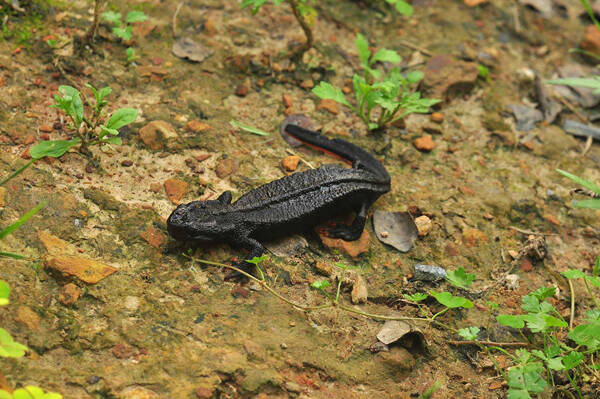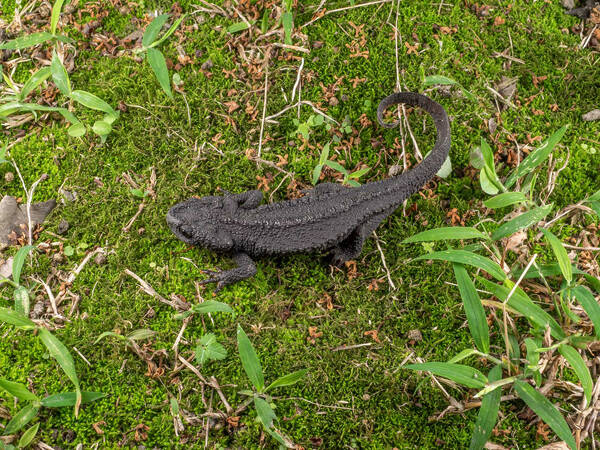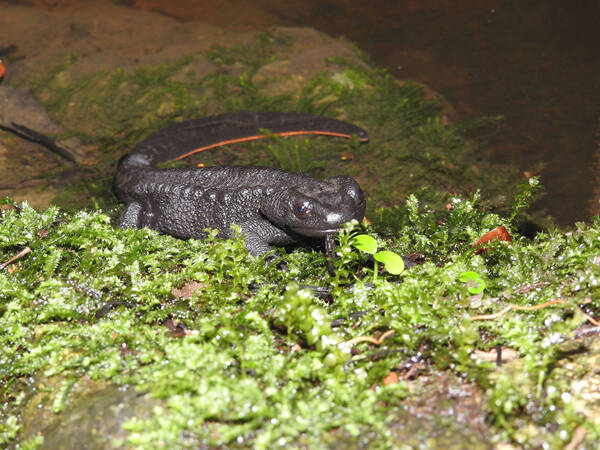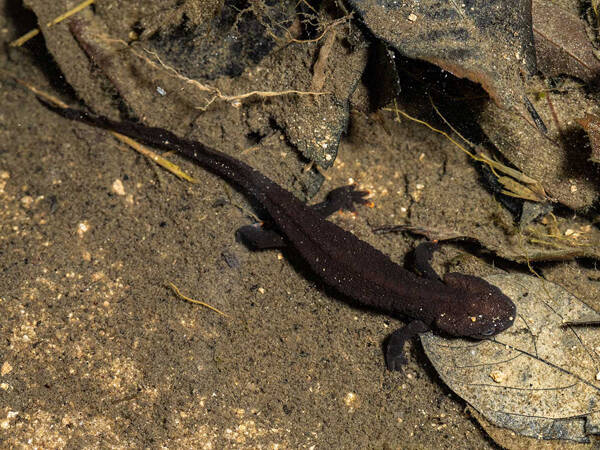Echinotriton chinhaiensis
IUCN
LCBasic Information
Scientific classification
- name:Echinotriton chinhaiensis
- Scientific Name:Echinotriton chinhaiensis,Zhenhai warty newt
- Outline:Urodela
- Family:Caudata Salamandridae Acanthophodon
Vital signs
- length:109-151mm
- Weight:
- lifetime:
Feature
The back and sides of the body are black with a waxy sheen, the abdomen is vermilion with irregular black spots, the head is large, and the limbs are slender.
Distribution and Habitat
Endemic to China, distributed in Zhejiang (Ningbo Zhenhai).
Lives in hilly and mountainous areas at an altitude of 100-200m.
Appearance
The trunk is flat, and the back of the body is covered with warts; the ridges on both sides of the head are underdeveloped, and there is a V-shaped ridge behind the top of the head; the central ridge of the back is prominent, and the rib ridges are obvious. There are many warts on the sides of the body that are accumulated and arranged in a scrofula. The whole body is brown-black, with only protrusions at the corners of the mouth. The tips of the fingers and toes and the tail and ventral fin folds are orange-yellow.
Details
Zhenhai Acanthus is an amphibian of the genus Acanthus of the family Salamandridae. It is endemic to China and has no subspecies. It lives in hilly areas at an altitude of 100-200 meters and lives by streams all year round. The environment where it lives is densely vegetated, with many permanent ponds, and stone caves and earth caves nearby.
Zhenhai Acanthus rarely moves during the day and comes out to look for food at night, especially after a light rain or thunderstorm, when the ground is very wet, Zhenhai Acanthus begins to move. Zhenhai Acanthus feeds on earthworms, snails, small snails, centipedes, etc. The hibernation period of Zhenhai Acanthus is from late November to April of the following year. If the Zhenhai Acanthus is stimulated and frightened, it will close its eyes, stretch its limbs forward, and tilt its entire body upward in a semicircle, revealing striking orange-yellow patches on its body. At the same time, the sharp spines on both sides of the body will protrude from the skin. This is a very rare defensive behavior among amphibians.
The eggs laid by Zhenhai Acanthus in April are similar to frog eggs, with a milky yellow color. The small Acanthus must live in the water for 58-88 days. The newly born small Acanthus breathes with gills like fish and eats algae, rotten plants and small aquatic animals. When the limbs and toes are well developed, the fins and gills are degenerated, and the skin becomes rough, they climb rocks and breathe with lungs, and never enter the water again.
The main reason why the Zhenhai Acanthus is endangered is the shrinking and destruction of its habitat. Human production activities, deforestation and capital construction have destroyed the habitat on which the Acanthus depends for survival, making the place where the animal reproduces and lives narrower and narrower. The newt is slow in movement and has a weak migration ability, so it is highly dependent on the environment. Once the breeding waters and habitats necessary for the Acanthus are destroyed, it will take at least 2-3 years, and at most 5-10 years, for the population of this species to drop sharply, and it may even become extinct in the area.
